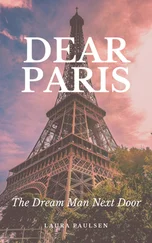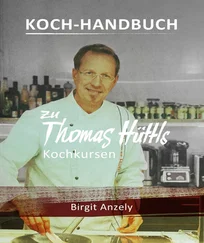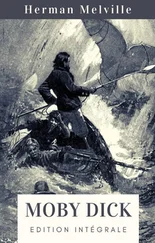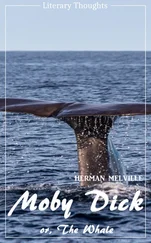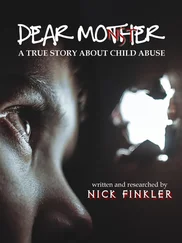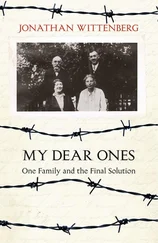“Why did you call it Life Before Death, Herman?” your wife asks once I’ve stopped the projector and am threading the next reel.
“Well, that was the thing in those days,” I say. “Pompous titles. It allowed you to make something out of almost nothing. After all, it’s only my parents. I had plans for a sequel, but when my father moved in definitively with his new girlfriend a few months later, I didn’t feel like it anymore.”
In the next movie we are back in Terhofstede. You see us walking, on the road to Retranchement, at the bend in the road to be precise: I had run out in front in order to see them all coming around the curve.
“Lodewijk,” you say. “And the one with the curly hair is Michael. Ron. David, that girl beside him, I always forget about her, his girlfriend, what was her name again?”
“Miriam,” I say.
“Laura,” you say as Laura comes by, walking arm in arm with Stella — but you don’t mention Stella’s name.
Then we’re in the Zwin. I film a thistle, and then the white surf in the distance, David and Miriam who have remained behind on the dike and are kissing.
We see Laura from the back, her long black hair, the prints her boots leave behind in the sand.
I catch up with her and pass her, I film her from the front. Laura has stopped — she’s looking straight into the camera, she brushes the hair out of her face. She looks. She keeps looking.
—
I mount the final reel on the projector. A white landscape, a snowstorm, a blue sign with the name of a place on it — RETRANCHEMENT, CITY OF SLUIS — covered in a ridge of snow, but there’s also snow stuck to the front of it; a red stripe runs diagonally across the sign.
Laura. Laura carrying a plastic shopping bag, a white woolen cap on her head; the camera zooms in — there is snow on her eyebrows, on her lashes — until the screen is filled with her face and goes from out-of-focus to black.
“They never found this movie,” I say. “I had just brought it to the shop to have it developed when they came and took all the others.”
Footprints in the snow, the camera pans up slowly, we see the start of a bridge, the railing of a bridge, ice below — the frozen water of what must be a river or canal.
On the far side of the bridge we see Landzaat, the history teacher. He waves, no, he gestures really: Come on, let’s go, hurry up. He turns around, takes a few steps, then looks back and stops.
It looks like someone has called his name, that that is why he’s stopped. He has turned left after the bridge, now he points straight ahead and raises both arms.
For a moment he stands there like that, he’s a fair distance away, but from his gestures, his body language, you can tell that he is saying something, maybe asking something — little white clouds are coming out of his mouth.
He starts to walk back, comes up onto the bridge a ways, then stops again. He says (or asks) something. He points.
Then he shrugs, turns and walks back to the end of the bridge, heads right.
For the first half hour of their trudge through the snow, Jan Landzaat and Herman barely speak. Sometimes they walk beside each other, and then, when the path grows narrower and the snow deeper, in single file.
Landzaat hadn’t slept a wink all night; he had tossed and turned, quietly, not making a sound, but the bed creaked at the slightest movement. With wide open eyes he had stared at the wooden planks on the attic ceiling, the checkered curtain at the window he had left open, the beams and planks illuminated by a streetlamp outside — he was sure that in that light he could also see the clouds of his own breath.
He had pondered, a feverish (there was no other word for it) pondering, his head glowed with all the thoughts tumbling over and scraping past each other. He had to pee, but he remained in bed until it started hurting, only then did he go downstairs.
Step by step, inside his churning, spinning head, the contours of a plan had begun to take shape. A plan which, somewhere around first light, he had christened “Plan B”—he laughed, without making a sound, at the name: Plan B. It sounded like something from an adventure novel, an action film in which the commandos take the island from the rocky north coast rather than crossing the mined beach in the south.
He had in fact already carried out the first part of his plan, without knowing at that point how it had to go. Last night, when the decision had finally been made that he would spend the night here, he had fetched his traveling bag from the car; his traveling bag and the bottle of whiskey, with less than a quarter still left in it.
There was no premeditation. Acting on impulse, he had slid in behind the wheel and screwed the top off the whiskey bottle. Tilting his head back to let the burning liquid flow down his throat as smoothly as possible, he caught sight of the little light built into the car ceiling, just behind the two front seats. In front, beside the rearview mirror, was another little bulb. A light put there to allow one, for example, to read a map at night.
The ceiling light was there for the passengers in the backseat. Sometimes his daughters asked him to turn it on when they were driving home at night, so they could read a magazine or a comic book.
Two or three times in the last year they had forgotten to turn off that light after they got home. The next morning the battery had been dead and he’d had to mess around with jumper cables or call the automobile association.
He took another slug, turned on the light, screwed the top back on the bottle, put it in his bag, and climbed out.
That was the first phase of Plan B. Whatever happened, the car wouldn’t start the next morning. He hadn’t seen a phone in the house. They could always call the automobile association from a house in the village, but he would immediately point out that the road service probably couldn’t get through in weather like this. He would suggest that they go for help at a garage.
He guessed that they wouldn’t send him out alone in the snow, that after some hesitation Herman would go along to show him the way — but Laura wouldn’t, Laura would stay at home.
He had guessed correctly.
—
They arrive at a narrow bridge across a frozen canal; at that point Jan Landzaat is walking out in front. Without thinking about it, he crosses the bridge and turns left on the other side. On Christmas Eve, alone in his pitiful studio apartment, when his initial plan (a plan he could now, in hindsight, refer to as Plan A) began to take shape, he had searched around a little for a road map, but all his maps were at the house, as he in fact already knew.
At that point he had thought about the glove compartment of his car: there were always a few road maps in there, maps from the last summer vacation, perhaps even a map of France, but certainly one of the Netherlands.
He made a mental note to stop at a gas station along the way and buy a map of France, if there wasn’t one in the car already. That would make his “friends in Paris” even more believable.
The next morning he ascertained that, indeed, the glove compartment contained only a map of Holland. He knew more or less how to get to Zeeland Flanders, he had been that way before, to Knokke, where his daughters had driven up and down the boulevard in pedal cars while he and his wife sat at an outdoor café and shared a plate of shrimp croquettes while knocking back a bottle of white wine.
Retranchement was still on the Dutch map, but Terhofstede wasn’t. He didn’t think it would be too difficult to find, though. The best thing would be to drive to Flushing and take the Breskens ferry. Retranchement was only about ten miles from Breskens.
Читать дальше

